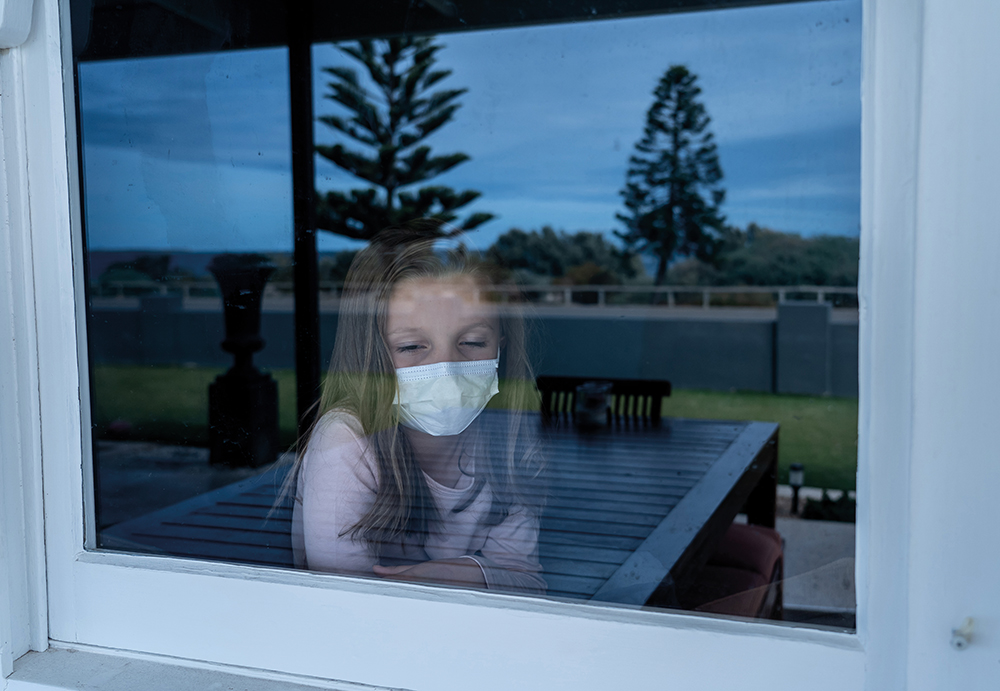Children and Young People’s Mental Health Coalition
 The Children and Young People’s Mental Health Coalition (CYPMHC) brings together more than 200 leading charities in the UK with the shared goal of improving the mental health and well-being of children and young people. In this exclusive interview, we speak with Oliver Glick, Policy Officer at CYPMHC, to hear about their achievements over the past decade and future plans.
The Children and Young People’s Mental Health Coalition (CYPMHC) brings together more than 200 leading charities in the UK with the shared goal of improving the mental health and well-being of children and young people. In this exclusive interview, we speak with Oliver Glick, Policy Officer at CYPMHC, to hear about their achievements over the past decade and future plans.
To begin, please tell us how CYPMHC was established and what is your overarching aim as a coalition?
The Children and Young People’s Mental Health Coalition was formed in 2010 with 28 member organisations. The goal then was to bring the sector’s voice, experience and campaigns together. That goal is the same today but now we have over 200 members! It was set up thanks to the generosity of the Zurich Community Trust and was hosted by the Mental Health Foundation between 2010 and 2018. The coalition is now hosted by the Centre for Mental Health.
Our vision is for all infants, children and young people to grow up in a society that prioritises, invests, listens and attends to their mental health and wellbeing. As a coalition, we only exist because our members do – we champion and aid their work. We have three strategic aims – prevention and promotion, early intervention, and skills and confidence.

CYPMHC celebrates its 10th birthday this year. What have been CYPMHC’s most significant achievements to date?
We are proud of our work Informing the Future in Mind policy initiative. Future in Mind is a government initiative designed to change how Child and Adolescent Mental Health Services (CAMHS) are delivered – a crucial national service. CYPMHC was a member of the Children and Young People’s Mental Health Taskforce. The work of this taskforce led to a £1.25 billion commitment and the initiation of the transformation programme.
Our lobbying also prompted the government to commission the children and young people’s mental health prevalence study in 2015 which was published in 2018. These data are important for decision-makers and society to get a clear picture of the levels of need of our children and young people, and making sure that investment and government attention match that need.
We have been very active in the COVID-19 response, something I’m pleased about as this is such a crucial time for children’s mental health. We have championed our member research and policy, which is developing all the time, and work to ensure that important findings get to decision-makers when it matters.
“Lockdown may have been traumatic for many children, so when they return to normality it needs to be ‘back to better’, not back to normal, in terms of support and their mental health.”

Looking to the future, what aims do you have for the next ten years? What specific challenges for children and young people do you intend to address?
Overall, we exist to try and reach a society where all children and young people have good mental health. How we get there is another question. We have three leading priorities that our members have agreed on. They are prevention and promotion, early intervention, and skills and confidence. I’ll explain each in turn and why we feel they are so crucial!
Prevention and promotion mean simply stopping mental health problems before they’ve begun and promoting good mental health. This work is so wide-ranging, as we know that many societal factors affect our mental health – from housing to poverty, from childhood trauma to sleep. That means, to stop mental health problems arising, decision-makers need to embed prevention across their policy. Prevention can be an abstract area. For example, ensuring everyone has a safe and secure home may, directly and indirectly, reduce mental health problems years later. However, if you’ve stopped something happening, decision-makers could come back and say, ‘how do we know those problems would have arisen if we hadn’t implemented that policy?’. This is an area with huge potential for change but one that requires good policy and research to implement.
Early intervention is about getting help to people as soon as their problems emerge. On average, children and young people receive help many years after symptoms arise. This is way, way too late, not only because of the suffering people endure in that time, but also because many problems are easier to treat the earlier help can begin. Services are so underfunded and stretched that they struggle to go beyond reacting to late-onset, acute issues but if we had more public health and community measures that are properly funded, we could act early.
Skills and confidence are about children: young people and everyone around them having the skills and confidence needed to take care of mental health. That includes parents and carers, as well as the workforce. Sometimes decision-makers think these are so-called ‘soft skills’, but they are so important. Giving people the space and language to get help, and help each other, is crucial. For example, peer support for young people is becoming more and more embedded, as we realise that young people turn to each other and rely on their networks so much anyway, that we should harness that and make sure it is impactful.
I should add that we have to adapt to the landscape of society changing all the time. We have produced a lot of policy on COVID-19 and lockdown, which of course, in January would have been non-existent. While we have our priorities, we also have to adapt to the national situation.

How does research on children and young people inform your policy campaigns?
Research, alongside the views of children, young people and their carers, forms the backbone of our policies. We are lucky to have an amazing membership, who are collectively producing important research. Our response to the pandemic is a great example of this. Our policy has arisen from findings from frontline providers and charities, who have identified crucial issues, such as vulnerable children being even more vulnerable, and the need for remote support of parents. We can build our recommendations to decision-makers from the ground up, from the research that matters. It is important for us to not pick things we like and retrofit research. We only exist because of our members, so are led by their work.
Thinking now from a different perspective, how does the work of CYPMHC influence research?
That’s where our part in the coordination and support of the sector comes in. We can look at the gaps in policy and discourse from the conversations we are in, and talk to our members about looking into research.
Recently, we held a series of member workshops on Zoom and heard from a lot of members with meaningful insight on a range of topics. Not only were we able to bring policy out of the workshops to take forward, but members who may not have conversed have gone away to join up their work. It is such a large sector that people can get a lot from joining up – they may not have done so before simply because they’re doing their own work but didn’t know another group could complement theirs.
Our members work hard to improve children and young people’s mental health, and sometimes simply sharing key messages can improve everyone’s campaigns. If decision-makers hear the same well-informed recommendation across the board, it has more chance of success.

Finally, the COVID-19 pandemic has resulted in a considerable negative impact on the mental health of many across the world. How have children and young people in the UK been affected and what can be done to help alleviate their distress?
The instinctive answer is ‘badly’. But we are careful to be nuanced – this is unprecedented in the modern world, so its full effects will be unknown for a while, making the need for long term monitoring and study crucial. There will even have been positives for some children and young people. For example, some have preferred the move to online counselling and therapy, and new innovative support from charities has been really impactful.
Fundamentally, most children have not been at school, and this is a huge disruption. Schools are a source of community, play, and a place where the volunteer and charity sector can engage with children. Parents and carers have been asked to balance jobs and their own mental health in a pandemic with so much academic and pastoral care of their children. Who knows how this will affect children in the long term.
For young people, transitions to further and higher education, or into the working world, are difficult at the best of times. Young people can fall through the cracks of services at this point. Lockdown and COVID-19 have been very challenging for them. At least with most school children, we can try and get schools reopening in a way that prioritises wellbeing. But with no institutions, 16 to 18 year olds are harder to support with the current systems.
We are worried about vulnerable groups, such as children in households with domestic abuse, or young carers, for example. Groups that need support and help usually have seen that greatly disrupted. Further, those in alternative provision or not at school aren’t going back, COVID-19 has highlighted what we been working on previously – that there are huge inequalities in access to support. The response needs to change things for the long term, helping to address those inequalities.
To help, we have been calling for a ‘trauma-informed’ approach to services and places, like schools. That means making sure schools are taking a person-centred approach to children, looking at their environment and experiences, not just how they are behaving. Lockdown may have been traumatic for many children, so when they return to normality it needs to be ‘back to better’, not back to normal, in terms of support and their mental health.

Reference
https://doi.org/10.33548/SCIENTIA533
Want to republish our articles?
We encourage all formats of sharing and republishing of our articles. Whether you want to host on your website, publication or blog, we welcome this. Find out more
Creative Commons Licence
(CC BY 4.0)
This work is licensed under a Creative Commons Attribution 4.0 International License. 
What does this mean?
Share: You can copy and redistribute the material in any medium or format
Adapt: You can change, and build upon the material for any purpose, even commercially.
Credit: You must give appropriate credit, provide a link to the license, and indicate if changes were made.
More articles you may like
Grandmothers: Innovation Through Tradition
Grandmother Project – Change through Culture (GMP) is an organisation dedicated to documenting the role of grandmothers and demonstrating the effectiveness of grandmother-inclusive strategies in improving the health and well-being of women, children, and adolescents. GMP’s groundbreaking work challenges conventional wisdom to transform community-based interventions in Africa and beyond, harnessing a powerful but often overlooked resource: the wisdom and influence of grandmothers.
Dr Robert Larkin | Cultivating Change to Improve Soil Health and Increase Potato Yield
Environmental quality and food production are facing the pressing challenges of climate change and global population growth. Dr Robert Larkin from the United States Department of Agriculture-Agricultural Research Service (USDA-ARS) and a team of plant scientists developed and tested a range of crop management systems to help overcome these compounding challenges. Their work is improving soil health and increasing the yield of potato crops, contributing to the future food security of nations.
Professor Giorgio Buttazzo | Artificial Intelligence and a Crossroads for Humanity
Where do we stand with artificial intelligence? Might machines take over our jobs? Can machines become conscious? Might we be harmed by robots? What is the future of humanity? Professor Giorgio Buttazzo of Scuola Superiore Sant’Anna is an expert in artificial intelligence and neural networks. In a recent publication, he provides considered insights into some of the most pressing questions surrounding artificial intelligence and humanity.
Dr Ralf Adam | New Technologies Shaping the Future of Oral Hygiene
Understanding the efficiency of various toothbrush technologies is essential for achieving optimal oral health. Dr Ralf Adam, who leads a dedicated team at Procter & Gamble in Germany, is keen to investigate the complexities of these technologies. His team have provided new insights into the best toothbrush types for plaque removal and the maintenance of gum health. By highlighting the importance of informed oral care decisions and ongoing investigations, this vital research works towards ensuring everyone can achieve a brighter, healthier smile.




